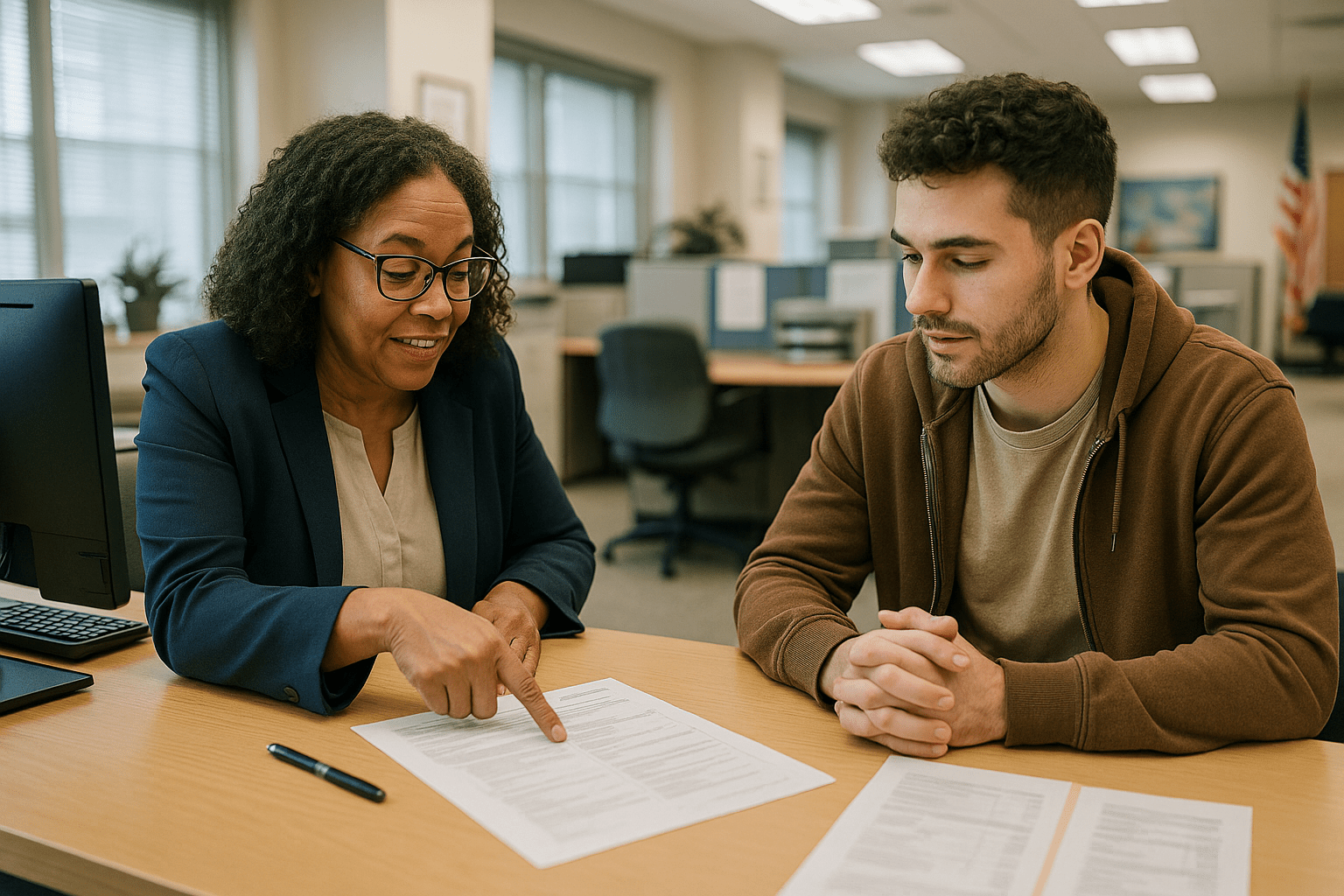First Time Home Buyer Programs: Escape The Renter Trap
First Time Home Buyer Programs: Escape The Renter Trap

How to Find and Stack First Time Home Buyer Assistance Programs
Whether you’re a parent helping your teen navigate the path to homeownership or a young adult researching your options, first time home buyer programs represent thousands of dollars in assistance that most people never discover. If you’re wondering how to afford a down payment, these programs exist specifically to help people like you—but they’re hidden across state agencies, city governments, and professional organizations.
The challenge isn’t qualifying for assistance. The challenge is knowing where to look and how to combine multiple programs to maximize your benefit.
In this guide, you’ll discover:
- Where state housing finance agencies offer grants and forgivable loans (per HUD housing programs)
- How to stack multiple assistance programs to reduce or eliminate your cash requirement (following CFPB homebuyer guidelines)
- Profession-specific programs for teachers, nurses, first responders, and veterans
- Local city and county programs that many buyers overlook
- How assistance programs work with different loan types like FHA and conventional
You’re closer to affording a home than you think. The money exists—you just need to know where to find it.
Ready to explore your options? Schedule a call to discuss assistance programs available in your area.
What Are First Time Home Buyer Programs?
First time home buyer programs are government-sponsored and nonprofit initiatives designed to make homeownership accessible by reducing or eliminating the cash needed at closing. These programs come in various forms: grants that never need to be repaid, forgivable loans that disappear after you live in the home for a set period, and second mortgages with favorable terms.
What makes these programs different from regular financing? Unlike traditional mortgages where you need substantial savings for down payment and closing costs, these programs provide funds to cover those expenses. Some are grants (free money), some are second loans (repaid when you sell or refinance), and some are forgivable loans (become grants after you meet occupancy requirements).
The assistance typically ranges from a few thousand dollars to tens of thousands, depending on the program and your area. Many programs have income limits designed to help low-to-moderate income households, but “moderate income” in many areas includes young professionals, teachers, nurses, and other stable careers.
For detailed information about combining assistance with FHA loans, which are the most common programs used with down payment assistance, you can explore how these financing options work together.

Why First Time Home Buyer Programs Matter for Young Adults
If you’re a young adult working to afford your first home or a parent watching your child struggle to save for a down payment, these programs change the timeline dramatically.
Why should you prioritize finding these programs? The math is simple: if you’re saving a few hundred dollars per month for a down payment, it might take years to accumulate enough. A grant or forgivable loan of several thousand dollars can accelerate your purchase by years—and every year matters when you’re building wealth through equity.
For parents: Understanding these programs allows you to guide your child toward resources that reduce or eliminate the need for large family gifts. Your child can achieve homeownership with less family financial support, preserving your resources while they build independence.
For young adults: These programs level the playing field. You don’t need wealthy parents or years of high income to afford homeownership. Strategic use of assistance programs puts you in the same position as buyers with more resources.
The real power of stacking? Many buyers don’t realize you can often combine multiple programs. A state grant plus a local city program plus an FHA loan with minimal down payment can reduce your cash requirement to nearly zero. See how this works in our down payment assistance case study where a teacher used grant funding and minimal savings to purchase her first home.
Where to Find First Time Home Buyer Programs
Finding assistance programs requires knowing where to look. These programs exist at multiple levels: federal, state, county, city, and through employers or professional organizations.
State Housing Finance Agencies
Every state has a housing finance agency that administers first time home buyer programs. These are your primary source for substantial assistance.
How do you find your state agency? Search “[Your State] Housing Finance Agency” or “[Your State] HFA.” Most states have programs offering grants, down payment assistance loans, and below-market interest rates for first-time buyers.
State programs typically have income limits based on area median income (AMI). What qualifies as “moderate income”? In many areas, households earning well into middle-class ranges still qualify because the limits are set higher than most people expect.
Common state program types include:
- Down payment assistance grants that don’t require repayment
- Forgivable second mortgages that become grants after you live there for a set period
- Below-market interest rate mortgages
- Mortgage credit certificates that provide annual tax credits
Use the conventional loan calculator to see how different down payment amounts affect your monthly payment and understand what assistance programs can do for your budget.
Local City and County Programs
Beyond state programs, many cities and counties offer additional assistance specifically for their residents. These are often overlooked because they’re not as widely advertised.
Where do you find local programs? Check your city’s housing department website or search “[Your City] first time home buyer program.” Larger cities often have multiple programs, sometimes targeting specific neighborhoods for revitalization.
Local programs might include:
- City-specific down payment grants
- Property tax abatements for first-time buyers
- Matched savings programs where the city matches your down payment savings
- Neighborhood-specific incentives
Can you combine city and state programs? Yes, in many cases. This is where stacking becomes powerful—a state grant plus a city program can provide substantial assistance.

Profession-Specific Programs: Hidden Assistance for Your Career
Many professions have dedicated first time home buyer programs that most people never discover. If you’re in education, healthcare, public safety, or military service, specialized programs exist specifically for you.
Programs for Teachers and Educators
Teaching professionals have access to multiple assistance programs recognizing the importance of educators in communities.
What programs exist for teachers? The Good Neighbor Next Door program (when available), state-specific teacher grants, local school district incentive programs, and Homes for Heroes programs all provide assistance to educators.
Many states offer teacher-specific down payment assistance grants ranging from several thousand to tens of thousands of dollars. Some programs forgive the loan entirely if you continue teaching in the area for a set period.
Programs for Healthcare Workers
Nurses, medical technicians, and other healthcare professionals often qualify for assistance programs, especially in areas with healthcare worker shortages.
Where do healthcare workers find assistance? Check with major hospital systems in your area—many offer homeownership assistance as an employee benefit. State housing agencies often have healthcare worker programs. Some areas offer incentives to healthcare workers who buy near hospitals.
The FHA loan program pairs well with profession-specific assistance since FHA allows gift funds and down payment assistance from approved sources.
Programs for First Responders
Police officers, firefighters, paramedics, and other first responders have access to programs like Homes for Heroes, local municipality programs, and state-specific first responder assistance.
What makes first responder programs valuable? Many offer not just down payment assistance but also reduced interest rates, property tax breaks, and ongoing cost reductions that benefit you throughout homeownership.
Military and Veterans
If you’re military or veteran, you have access to both VA loans (which require no down payment) and additional veteran-specific assistance programs. Some states offer veteran homebuyer grants on top of VA loan benefits.
Can you stack veteran benefits? Yes, VA loans already have no down payment requirement, but veteran-specific grants can help with closing costs, making homeownership even more accessible. Check out our VA loan case study to see how a Marine veteran purchased their first home with zero down payment.
How to Stack Multiple Assistance Programs
The real power of first time home buyer programs emerges when you understand how to combine them legally and effectively. Stacking means using multiple programs simultaneously to maximize your benefit.
What does stacking look like in practice? You might combine a state down payment assistance grant with a local city program and use an FHA loan with minimal down payment. Each program covers a different piece of your costs.
Understanding Program Rules and Compatibility
Not all programs can be combined, but many can. How do you know what stacks? Each program’s guidelines specify whether other assistance can be used. Generally, you can combine:
- State grant + local city program + FHA or conventional loan
- Employer assistance + state program + qualified loan type
- Profession-specific program + general first-time buyer program
What typically can’t be combined? Two state-level programs usually can’t be used together, and some programs explicitly prohibit combining with other assistance.
The Application and Approval Process
Applying for multiple programs requires coordination and organization. What’s the process? You typically need to:
- Get pre-approved for your mortgage (FHA, conventional, etc.)
- Apply for state programs first (longest processing time)
- Apply for local programs with your pre-approval letter
- Submit profession-specific program applications
- Coordinate timing so all approvals happen before closing
Use the FHA loan calculator to estimate your total loan amount and understand how much assistance you need to target.
Real Example of Stacking
Let’s look at a realistic stacking scenario: A teacher in a mid-size city qualifies for:
- State first-time buyer grant covering substantial down payment assistance
- City teacher incentive program providing additional funds
- FHA loan with minimal down payment
- Profession-specific closing cost credit from teacher program
Combined, these programs reduce the teacher’s out-of-pocket cash needed to minimal amounts, making homeownership achievable without family gifts or years of saving.

Income Limits and Qualification Requirements
First time home buyer programs have qualification requirements designed to help people who need assistance most while ensuring responsible lending.
What Are Income Limits?
Most programs base eligibility on area median income (AMI). How do AMI limits work? If a program has an income limit of “80% of AMI” and your area’s median income is moderate, you might qualify with a solid middle-class income.
Do income limits seem low? Remember that many young professionals, especially in dual-income households, earn more than they realize. Check specific program limits for your area—you might be surprised to find you qualify.
First-Time Buyer Definition
The term “first-time buyer” is broader than most people think. Who qualifies as a first-time buyer? You’re considered a first-time buyer if you haven’t owned a home as your primary residence in the past few years. Even if you owned a home years ago, you might still qualify.
Some programs also consider you a first-time buyer if you’re a displaced homemaker, single parent who only owned with a former spouse, or buying in a targeted revitalization area even if you’ve owned before.
Credit and Employment Requirements
Most programs have minimum credit requirements, though they’re typically more flexible than conventional loans. What credit do you need? Requirements vary, but many programs accept credit scores that align with FHA minimums or slightly above.
Employment requirements usually focus on stability rather than income level. Consistent employment history, even at moderate income, often satisfies requirements.
For buyers with limited credit history, review our authorized user credit card post to understand how to build credit strategically before applying for programs.
Program Types: Grants vs. Forgivable Loans vs. Second Mortgages
Understanding the different types of assistance helps you choose programs strategically.
Grants (True Free Money)
Grants are funds you never have to repay as long as you meet occupancy requirements. What makes grants valuable? They reduce your cash needed at closing without creating additional debt or future obligations.
Most grants require you to live in the home as your primary residence for a minimum period. If you sell or move before that period ends, you might need to repay the grant.
Forgivable Loans (Becomes Free Money Over Time)
Forgivable loans are second mortgages that reduce gradually over time. How do forgivable loans work? You receive a loan at closing, but a portion forgives each year you remain in the home. After the full period (often several years), the entire loan is forgiven.
If you sell before the forgiveness period ends, you repay the remaining unforgiven balance.
Second Mortgages (Interest-Free or Low-Interest)
Some programs provide second mortgages with favorable terms: no interest, deferred payments, or below-market rates. When are these repaid? Many second mortgage programs don’t require payment until you sell, refinance, or pay off your first mortgage.
The conventional loan and FHA loan programs both work with these second mortgage assistance structures.

How First Time Home Buyer Programs Work with Different Loans
Understanding how assistance programs pair with different loan types helps you maximize your benefit.
Using Programs with FHA Loans
FHA loans and down payment assistance programs work together seamlessly. Why is FHA popular with assistance? FHA’s flexible qualification requirements match well with assistance program guidelines, and FHA explicitly allows down payment assistance from approved sources.
When using FHA with assistance, you typically need minimal down payment from your own funds, with the assistance covering the rest of your required down payment and often closing costs. Review our FHA loan case study to see how a physical therapist achieved first-time homeownership with minimal down payment.
Using Programs with Conventional Loans
Many conventional loan programs accept down payment assistance, though requirements are slightly stricter than FHA. What’s different about conventional? You might need slightly higher credit scores and more contribution from your own funds.
The advantage: conventional loans can avoid mortgage insurance with larger down payments, so if your assistance provides substantial funds, you might eliminate private mortgage insurance entirely.
Using Programs with USDA and VA Loans
USDA loans already require zero down payment in eligible rural areas, but assistance programs can help with closing costs. VA loans also require no down payment, but assistance with closing costs and prepaids can help veterans and military members.
Can you use assistance with no-down-payment loans? Yes, for closing costs, prepaids, and other expenses. See how this works in our USDA loan case study where a medical technician purchased with zero down payment in rural Florida.
Common Mistakes to Avoid
Understanding what not to do saves time and prevents disqualification.
Waiting Too Long to Apply
Many programs have limited funding that runs out each fiscal year. When should you apply? Start the application process early in your home buying journey, ideally when you begin looking at properties or getting pre-approved.
Don’t wait until you have a property under contract—some programs take months to process.
Not Reading Program Requirements Carefully
Each program has specific requirements about property type, location, price limits, and occupancy. What disqualifies you? Buying a property outside program boundaries, exceeding price limits, or not meeting occupancy requirements can invalidate assistance.
Read all program guidelines thoroughly before assuming you qualify.
Assuming You Don’t Qualify
Income limits are higher than most people expect, and “first-time buyer” definitions are broader than you think. Why do people miss out? They assume without checking that they earn too much or don’t qualify as first-time buyers.
Always check specific program requirements for your area before eliminating options.
Not Coordinating Program Timing
When stacking multiple programs, timing matters. What causes problems? Program approvals expiring before you close, or not having all approvals completed when needed.
Work with a knowledgeable lender who can coordinate multiple program timelines effectively.
How Stairway Mortgage Helps Navigate Assistance Programs
At Stairway Mortgage, we specialize in helping first-time buyers access and stack assistance programs to maximize benefit.
What makes our approach different? We maintain current knowledge of programs in the areas we serve, including state, local, and profession-specific options. We don’t just process your loan—we actively research what assistance you qualify for and help you access it.
We coordinate program applications and timing so everything aligns for your closing. When you’re stacking multiple programs, timing coordination is crucial, and we manage that process.
How do we handle the paperwork? Many assistance programs involve substantial documentation. We guide you through each requirement, helping you gather what’s needed and submit applications correctly.
For house hacking strategies combined with assistance programs, we help you understand how rental income projections work with program requirements. Learn more about house hacking in our comprehensive house hacking for beginners guide.
Get pre-approved and we’ll identify assistance programs available to you.
Ready to Find Your Programs?
First time home buyer programs exist specifically to help people like you afford homeownership. The money is available—most buyers simply don’t know where to look or how to access it.
Whether you’re a teacher, nurse, first responder, young professional, or career starter, programs exist that can reduce or eliminate your cash requirement. Combined with smart loan choices and proper planning, these programs make homeownership achievable years earlier than saving alone.
The first step is understanding what’s available in your area. Take our Discovery Quiz to get personalized guidance, or schedule a call to speak with an advisor who can research specific programs for your situation.
Your peers will spend years saving for a down payment. You could access assistance that gets you into a home this year.
Frequently Asked Questions
Do I have to pay back down payment assistance?
It depends on the program type. Grants never require repayment as long as you meet occupancy requirements. Forgivable loans gradually reduce over time and eventually require no repayment. Second mortgages remain as debt until you sell, refinance, or pay off your first mortgage. Most assistance programs are structured to be very favorable to buyers.
Can I use down payment assistance for any property?
Most programs have property requirements including price limits, location restrictions, and property type limits. You typically must buy a primary residence within program boundaries and stay under maximum purchase price limits. Investment properties generally don’t qualify. Check specific program guidelines for your area.
How long do I have to live in the home to keep the assistance?
This varies by program but typically ranges from a few years to several years for grants and forgivable loans. If you sell or move before the required period, you may need to repay some or all of the assistance. Most programs use sliding scales where more forgiveness occurs the longer you stay.
Can I stack assistance programs with family gift money?
Yes, in most cases you can combine assistance programs with gift funds from family members. Many buyers use program assistance to reduce their cash requirement while family helps with remaining costs or reserves. Make sure both the assistance programs and your loan type allow gift funds. Review our gift money for down payment post for rules and requirements.
Do assistance programs affect my interest rate?
Some programs include below-market interest rates as part of the benefit, which obviously helps your rate. Other programs provide grants or second mortgages but don’t affect your first mortgage interest rate. A few programs might result in slightly higher rates, but the benefit of the assistance typically outweighs any rate difference.
What if I earn too much for assistance programs?
Income limits exist, but they’re often higher than people expect. “Moderate income” in many areas includes solid middle-class earnings. Even if you exceed standard program limits, profession-specific programs sometimes have higher limits or no limits at all. Check all available options before assuming you don’t qualify.
Can self-employed buyers use these programs?
Yes, self-employed buyers can absolutely use first time home buyer programs. You’ll need to document your income appropriately (typically through tax returns), but self-employment doesn’t disqualify you. Some programs are actually designed to help self-employed individuals who might struggle with conventional financing. Consider bank statement loans if traditional income documentation is challenging.
How do I find programs in my specific state and city?
Start with your state housing finance agency website—search “[Your State] Housing Finance Agency.” Then check your city or county housing department website. Contact local nonprofits that offer homebuyer education classes, as they maintain lists of available programs. A knowledgeable mortgage broker can also research programs available in your area.
Are there programs for single parents?
Yes, many programs have no household composition requirements, while some programs specifically target single parents or displaced homemakers. Single parents should check state programs, city programs, nonprofit assistance organizations, and employer benefits. Some areas have programs specifically for single mothers or fathers.
What happens to the assistance if I refinance?
This depends on your assistance structure. Grants that have met their occupancy requirement typically don’t need repayment when you refinance. Second mortgages might need to be paid off in a refinance, or some lenders allow you to keep the second mortgage in place and refinance only the first. Read your assistance program terms carefully before refinancing. An FHA streamline refinance might be possible while maintaining certain types of assistance.
Also Helpful for Smart Stewards
Understanding Qualification: Learn about FHA loan qualifications to understand how assistance programs work with FHA financing, which is the most common loan type used with down payment assistance.
Saving Strategies: Even with assistance programs, you’ll need some savings. Our guide on how to save for a house covers your first $10,000 and where to keep it.
Building Your Budget: Learn the 50 30 20 budget rule to manage your money effectively while preparing for homeownership and program applications.
What’s Next in Your Journey?
If you’re ready to apply: Get pre-approved and we’ll identify specific assistance programs available to you based on your location, profession, and situation.
If you need more information: Explore the down payment assistance calculator to see how different assistance amounts affect your monthly payment and overall costs.
If you want to see real examples: Check out our down payment assistance case study to see how a teacher used grant funding with minimal savings to purchase her first home.
If you have specific questions: Schedule a call with an advisor who can research assistance programs specific to your area and profession.
Explore Your Complete Options
Related Loan Programs:
- FHA loan for minimal down payment combined with assistance
- Conventional loan for buyers who can contribute more down payment
- USDA loan for zero down payment in eligible rural areas
All Program Options: View all available financing at Loan Programs Hub to compare assistance-friendly loan types.
Financial Tools: Explore our complete collection at Loan Calculators Hub to run scenarios with different assistance amounts.
Success Stories: Browse Case Studies Hub to see how other first-time buyers have successfully used assistance programs.
Need a Pre-Approval Letter—Fast?
Buying a home soon? Complete our short form and we’ll connect you with the best loan options for your target property and financial situation—fast.
- Only 2 minutes to complete
- Quick turnaround on pre-approval
- No credit score impact
Got a Few Questions First?
Let’s talk it through. Book a call and one of our friendly advisors will be in touch to guide you personally.
Schedule a CallNot Sure About Your Next Step?
Skip the guesswork. Take our quick Discovery Quiz to uncover your top financial priorities, so we can guide you toward the wealth-building strategies that fit your life.
- Takes just 5 minutes
- Tailored results based on your answers
- No credit check required
Related Posts
Subscribe to our newsletter
Get new posts and insights in your inbox.










